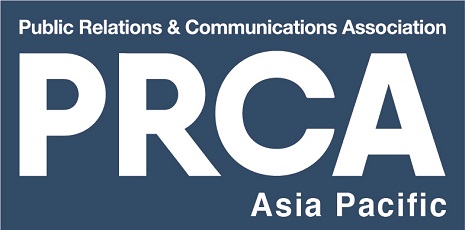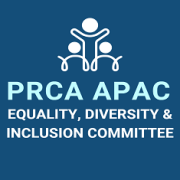Telum Talks To… Charu Srivastava, Chair of PRCA APAC Equality, Diversity & Inclusion Committee
This article was originally posted on Telum Media’s website.

Last year, PRCA APAC unveiled its inaugural Equality, Diversity & Inclusion Committee. Chaired by Redhill’s Deputy Managing Director Charu Srivastava, it aims to foster the growth of inclusive cultures in PR across the Asia Pacific.
Congrats on your appointment as Chair of PRCA APAC Equality, Diversity & Inclusion Committee. Tell us more about it.
The PRCA APAC E, D and I Committee is the first of its kind that is focused on fostering the growth of inclusive cultures in PR across the Asia Pacific, specifically within the PR and communications world. The committee brings together a group of industry peers from both in-house and agency backgrounds who are extremely passionate about championing equality, diversity and inclusion. We are committed to creating a real impact on the industry and making it a better place for future generations.
In our industry, discrimination and inequality go beyond racial and gender biases. Till date your age, sexual orientation and even your alma mater can be a cause for discrimination. We’re working towards raising awareness around the myriad issues that fall within this space, as well as de-stigmatising and normalising conversations and discourse surrounding them. It is imperative to bring these issues to the fore and address them through open and honest conversations, and it starts with us.
What do you think of APAC’s current progress in embracing diversity, equality, and inclusion?
Within the APAC region, the PR industry has been slow and selective in its progress towards embracing diversity, equality, and inclusion. It isn’t for lack of trying, as I know there are people who are doing just that.
However, the region is not homogenous. Different issues take priority and have varying sensitivities across countries. This makes it even more challenging to balance creating a real impact while trying to be mindful of local nuances, culture and traditions. Having said that, the various surveys that are looking more closely at this region through the DEI lens are definitely a step in the right direction. Instead of working off trending issues in other parts of the world, we need to start in our own backyard by acknowledging and dealing with the issues here first. We need to address things with more understanding and localisation.
Who has responsibility for diversity, equality and inclusion in a workplace?
It is a joint responsibility between the talent development / human resources and the management teams. While the management team can come up with and set the right direction, it is crucial for that stance to be translated into actionable policies that drive actual change and set clear expectations within an organisation, which falls under the purview of the HR team. It is a top-down approach and the buy-in and backing of senior people is very important for junior staff to truly believe in the efforts beyond just lip service.
As an example, we do not ask candidates for their last drawn salaries at Redhill. This allows people who have taken a break from work – for whatever reason – to be fairly compensated based on their new role and responsibilities, instead of being pegged to and benchmarked against a past role.
What are the common challenges PR agencies face in making diversity and inclusion successful?
These challenges vary between countries and agencies. Some common ones include poor execution of well-meaning ideas – this is usually because they failed to get organisational buy-in. Getting buy-in across the agency, from HR and management to other team members, is key to actualising an idea as these are the people who will put it into action.
Another challenge is agency self-awareness. The first step is acceptance, and agencies must recognise their own gaps and shortcomings in the diversity and inclusion space to be able to enact change. For example, a homogenous management team may not be able to see the issues that affect staff members that belong to other races, genders and educational backgrounds. It’s a catch-22 issue, which is why it’s important to start that conversation to raise awareness. It might sound simple, but the reality is many places in and outside PR fail to look in the mirror and acknowledge these flaws.
The last – but by no means least – challenge is simply complacency, and this relates to the second point. Why change when the status quo ‘works’? Why challenge norms when nothing is ‘broken’? It’s tempting to keep things the way they are if everything seems fine on the surface, but that doesn’t mean that things aren’t bubbling beneath – and if you’re not careful, one day tensions may boil over.
These are the challenges that we’re keeping in mind as we set out to create real change. Our goal is to start small but make a difference. We want to encourage teams to take baby steps and adopt new practices and processes that can still result in real, impactful change. And we really believe this start with honest, candid conversations across seniority.
How does having a diverse workforce impact innovation in the workplace?
Diversity in the workforce leads to diversity in thought, perspective and ideas, which naturally creates a more inclusive and respectful space. It also cultivates an environment where thoughtful questions and honest discourse are encouraged. Ultimately, this all leads to more creative and innovative solutions and campaigns, as well as more impactful outcomes overall.
Source: Telum Media

